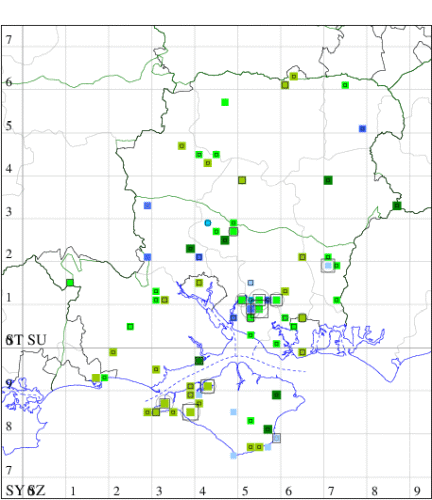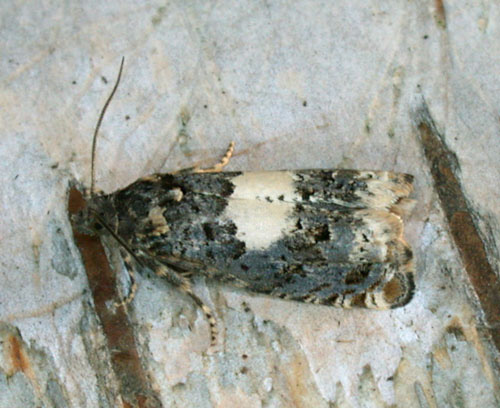Epiblema scutulana
Checklist Number49.285 [B&F: 1184]
Verification
Record will require further evidence, at least a good photograph, unless CMR is aware recorder has confidence in identification
Classification
| Family: | Tortricidae |
| Subfamily: | Olethreutinae |
| Genus: | Epiblema |
| Species: | scutulana |
| Authority: | ([Denis & Schiffermüller], 1775) |
Common in waste ground and rough meadows throughout much of the British Isles. In Hampshire and on the Isle of Wight widespread and reasonably common, although true status remains uncertain owing to confusion with E. cirsiana, with which formerly treated as conspecific. Wingspan 18-23 mm. The male is very distinctive, but the female may be confused with E. cnicicolana; larger than E. cirsiana with the male characteristically larger and lighter in coloration than the female [Bradley]. Larva feeds within roots and lower stems of Musk Thistle and Spear Thistle.


The abundance in each month is indicated as follows:
 No records
No records Very occasional
Very occasional Irregular
Irregular Uncommon
Uncommon Off-peak, but not unusual
Off-peak, but not unusual Off-peak, but not unusual
Off-peak, but not unusual Main flight time
Main flight time| J | F | M | A | M | J | J | A | S | O | N | D | |
|---|---|---|---|---|---|---|---|---|---|---|---|---|
| Adult |  |  |  |  |  |  |  |  |  |  |  |  |
| Larval |  |  |  |  |  |  |  |  |  |  |  |  |


